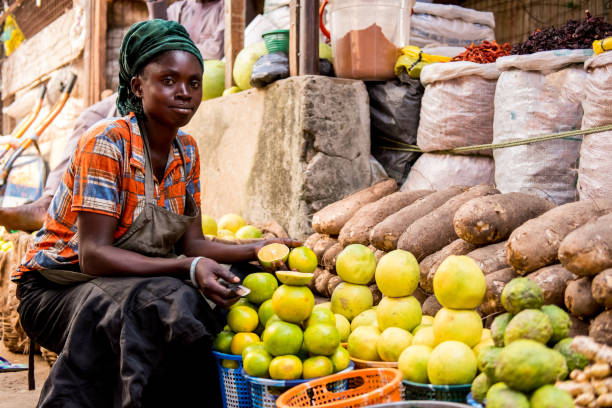<!-- wp:social-links --><ul class="wp-block-social-links"><!-- wp:social-link {"url":"https://gravatar.com/passionate143f97d20b","service":"gravatar","rel":"me"} /--></ul><!-- /wp:social-links -->Tech & Processes
Why Did the Central Bank Increase the MPR?
Why Did the Central Bank Increase the MPR?

Lately, life in Nigeria has felt more expensive than ever. Prices of everyday goods and services are rising faster than anyone would like, from the cost of tomatoes at the market to the expenses of running a business. Inflation isn’t just a buzzword—it’s something affecting all of us.
To tackle this, the Central Bank of Nigeria (CBN) has stepped in with new monetary policy adjustments. If terms like MPR, CRR, and liquidity ratio make your head spin, don’t worry. This article breaks it all down, so you’ll not only understand what’s happening but also why it matters.
Here’s the gist:
- The Monetary Policy Rate (MPR) has jumped by 400 basis points from 18.75% to an all-time high of 22.75%.
- The Cash Reserve Ratio (CRR) has climbed from 32.5% to 45%.
- The Bank Liquidity Ratio remains steady at 30%.
- The Asymmetric Corridor is now set at +200/-700 basis points of the MPR.
What does all this mean for you? Let’s start by decoding these terms.
Financial Terms Explained
1. Monetary Policy Rate (MPR)
- In Simple Terms: The MPR is like the North Star for interest rates in Nigeria. It’s the rate the CBN uses to set the tone for borrowing and lending across the country. The latest increase of 400 basis points (or 4%) means higher borrowing costs.
- What It Means for You:
- Borrowing money just got pricier. Before this hike, banks charged interest rates between 25–30%. Now, it might go as high as 35%.
- On the flip side, savings accounts might start offering better returns—potentially up from 10% to 15%. That’s some silver lining for savers.
2. Cash Reserve Ratio (CRR)
- In Simple Terms: Think of the CRR as a rule that says, “Banks, keep a chunk of your money with the CBN.” Currently, 45% of all customer deposits must stay untouched in the CBN’s vaults.
- What It Means for You:
- Banks now have less money to lend, which could make it harder for people and businesses to get loans.
- On the bright side, less cash floating around can help bring down inflation by reducing spending power.
3. Bank Liquidity Ratio
- In Simple Terms: This is the cushion banks need to keep to ensure they can meet withdrawal demands. It’s like an emergency fund for banks.
- What It Means for You:
- At 30%, this rule ensures your bank is stable enough to hand over your cash when you need it.
- However, it also means banks are cautious with how much they lend out, affecting credit availability.
4. Asymmetric Corridor
- In Simple Terms: This is how the CBN controls cash flow between itself and banks, using the MPR as a baseline. If banks lend their extra cash to the CBN, they earn a lower rate (MPR – 700 basis points, or 15.75%). If they borrow from the CBN, they pay a premium (MPR + 200 basis points, or 24.75%).
- What It Means for You:
- This setup nudges banks to invest their money elsewhere—like in loans to businesses—rather than leaning on the CBN.
Why the CBN Made These Moves
Now, let’s get to the big question: why did the CBN make these adjustments?
Fighting Inflation
The primary goal is to slow down inflation. By making borrowing more expensive, both consumers and businesses are likely to spend less. Over time, this reduced spending can cool down demand for goods and services, which helps stabilize prices.
For example, a company selling bottled water might initially raise prices to cover higher loan costs. But if demand drops because fewer people are buying, the business might have to lower prices to attract customers again. It’s a chain reaction that’s been used globally to combat inflation.
Tightening the Money Supply
Raising the CRR limits the amount of cash banks have for lending. This directly reduces the money circulating in the economy, which can help control inflation.
Interestingly, some banks were already holding reserves above 45%, while others operated below the old 30% threshold. By unifying the CRR, the CBN ensures consistency across the banking sector.
Encouraging Productive Investments
Adjustments to the asymmetric corridor discourage banks from parking funds with the CBN for low returns. Instead, banks are encouraged to channel their resources into loans or investments that stimulate economic growth.
What Does This Mean for the Economy?
These changes aren’t without challenges. Borrowers will feel the pinch of higher interest rates, and accessing credit might become tougher for businesses and individuals. But the long-term goal is to create a more stable economy, where inflation is under control and money flows are balanced.
Final Thoughts
The Central Bank’s recent policy adjustments are designed to address inflation, stabilize the naira, and strengthen the banking system. While the immediate effects might be uncomfortable, these measures aim to lay the groundwork for a more resilient economy.
For more insights into finance, banking, and economic trends, visit our blog. We’re here to make the complex world of money easier to navigate.
Why Core Banking Matters
Why Core Banking Matters

Why Core Banking Matters: A Friendly Dive
Let’s rewind to the early 2000s in Nigeria. Back then, banks operated in silos—each branch was like an island. If you opened an account at one branch, you had to return there for every transaction. Frustrating, right? Enter core banking, the game-changer that united bank branches and made life so much easier.
Fast forward to 2020: Moniepoint took core banking to another level. While many fintech companies relied on prebuilt systems, Moniepoint built their own from scratch. Why? To handle billions of transactions daily with speed, trust, and reliability.
So, What Is Core Banking?
Think of core banking as the central nervous system of a bank. It handles all the behind-the-scenes operations, like updating balances, managing loans, and processing transfers. The software that powers this is called a Core Banking Application (CBA)—essentially the bank’s digital ledger. Without it, a bank simply couldn’t function.
Here’s what a CBA does:
- Manages customer data: From personal details to account types.
- Tracks transactions: Keeps an eye on every deposit, withdrawal, and transfer.
- Customizes accounts and loans: Configures different products with unique terms.
- Handles daily operations: Ensures smooth transactions and provides detailed reports.
Why Do Banks Switch Their CBAs?
Migrating to a new CBA is a big decision. Banks usually switch for reasons like:
- Cutting Costs: Relying on foreign CBAs can get expensive due to currency fluctuations.
- Scalability: Growing banks need systems that can handle more accounts and transactions.
- Innovation: New CBAs support modern features that older ones can’t.
Challenges of Switching
Migration isn’t as simple as flipping a switch. Banks must transfer massive amounts of data, test systems rigorously, and plan carefully to avoid disruptions. Timing is critical—most switches happen during off-peak hours to minimize impact. Even minor errors can create huge problems, like incorrect balances or duplicate transactions.
How Moniepoint Built Their CBA
In 2020, Moniepoint realized they needed a robust system to meet growing demands. Off-the-shelf solutions weren’t enough, so they built their own CBA using tools they knew well, like MySQL and Java Spring. They planned for growth, running tests with future traffic in mind, and adjusted quickly when actual numbers surpassed expectations.
Backup plans? Of course. Moniepoint ensured seamless operations by creating backups, simulating real-life scenarios, and even building systems that could redirect traffic to alternative providers during downtime.
Wrapping It Up
Core banking applications might not be flashy, but they’re the foundation of every smooth banking experience. At Moniepoint, their custom-built system keeps your banking stress-free, secure, and lightning-fast.
To stay informed about Moniepoint’s innovations and the evolving world of banking, make sure to visit our website. We’re always updating with insights, tools, and the latest in financial technology, ensuring you’re never left behind. Check in regularly—you’ll always find something new to learn!
Bank USSD
The Big Oxmox advised her not to do so, because there were thousands of bad Commas, wild Question.


